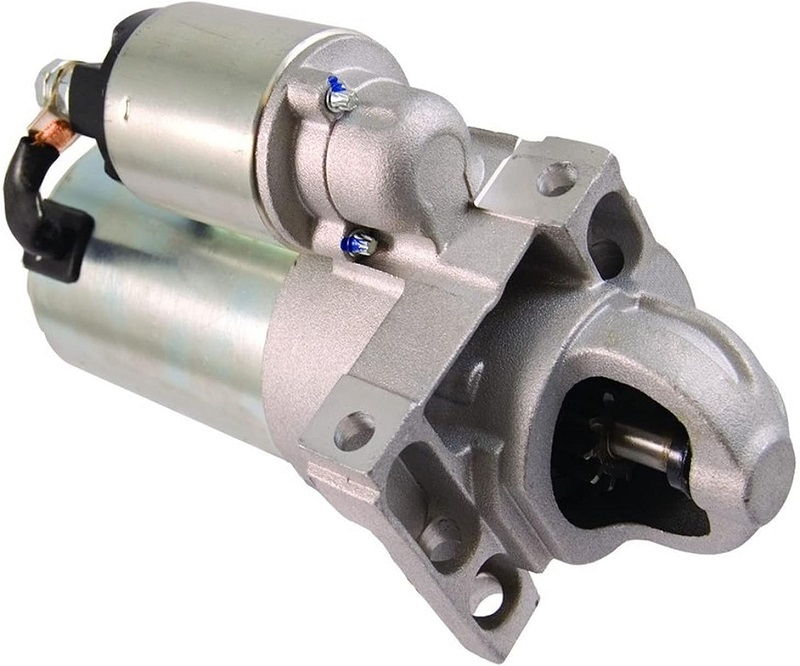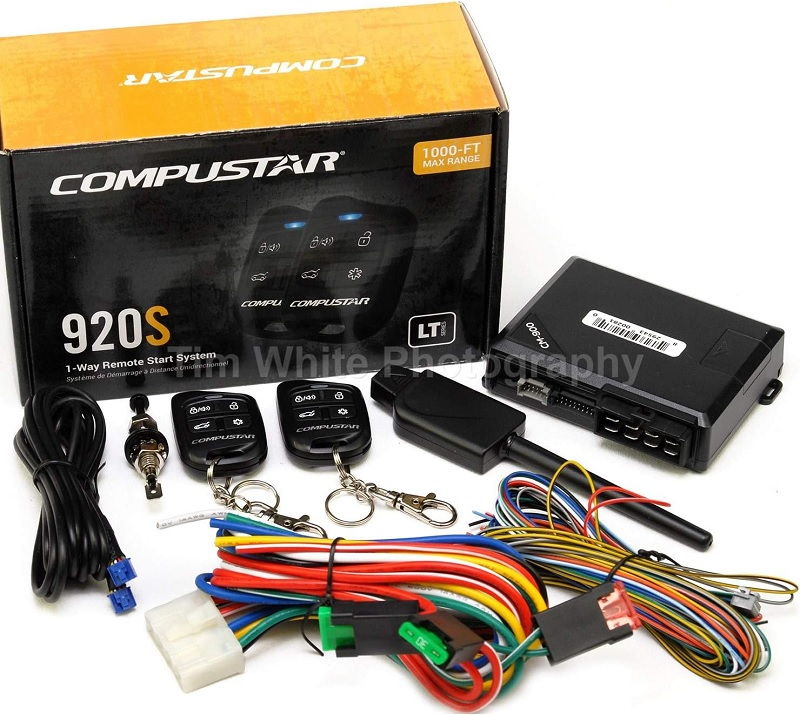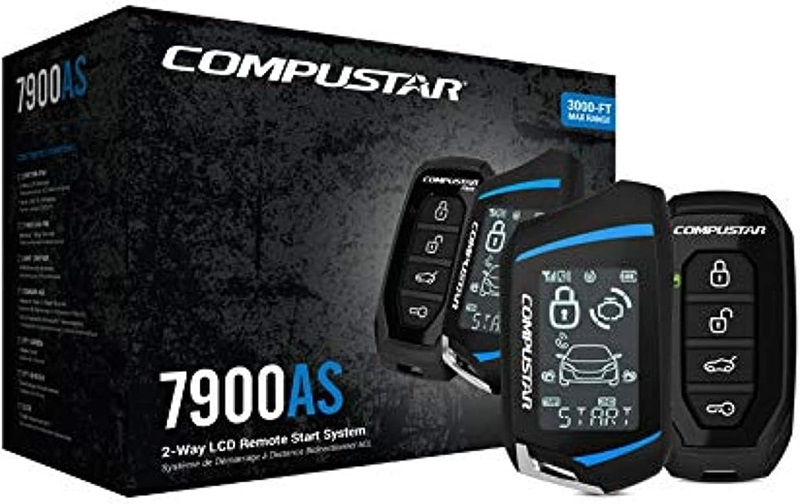This post contains affiliate links. This means I will make a commission at no extra cost to you should you click through and make a purchase [ “As an Amazon Associate, I earn from qualifying purchases.” ]. Read the full disclosure here.
Chevy Silverado Starter GuideMechanic.Com When it comes to the reliable and rugged Chevy Silverado, one component that plays a crucial role in its smooth operation is the starter. Responsible for initiating the engine’s rotation, a well-functioning starter is essential for a hassle-free driving experience.
In this blog article, we will delve into the world of Chevy Silverado starters and provide you with a detailed and comprehensive guide to understanding and troubleshooting them.
Chevy Silverado Starter – What is a Starter and How Does it Work?

A starter is an electric motor that converts electrical energy into mechanical energy, enabling the engine to start. When you turn the ignition key or press the start button, it sends an electrical signal to the starter solenoid, which then engages the starter motor.
The starter motor, in turn, rotates the engine’s flywheel or flexplate, initiating the combustion process and allowing the engine to come to life.
The Components of a Chevy Silverado Starter
A Chevy Silverado starter consists of several key components that work together to ensure the smooth operation of the ignition process:
- Starter Motor: This is the main component responsible for converting electrical energy into mechanical energy. It consists of a powerful electric motor and a gear mechanism that engages the flywheel or flexplate.
- Starter Solenoid: The starter solenoid acts as a relay between the ignition switch and the starter motor. It receives the electrical signal from the ignition switch and then sends a high current to the starter motor, allowing it to engage.
- Wiring and Electrical Connections: A network of wiring and electrical connections enables the flow of electricity between the battery, ignition switch, starter solenoid, and starter motor. These connections must be in good condition to ensure proper functioning.
- Mounting and Housing: The starter motor and solenoid are mounted on the engine block or transmission housing, ensuring stability and proper alignment with the flywheel or flexplate.
The Ignition Process: From Key Turn to Engine Start
See Also: Chevy Cruze Mass Air Flow Sensor
Understanding the ignition process helps paint a clearer picture of the starter’s role. When you turn the ignition key or press the start button, it completes an electrical circuit that activates various components, including the starter. Here’s a step-by-step breakdown of the ignition process:
- Ignition Signal: The ignition switch sends an electrical signal to the starter solenoid when you turn the key or press the button. This signal is typically a low voltage current.
- Starter Solenoid Activation: Upon receiving the ignition signal, the starter solenoid becomes magnetized, allowing a high current to flow from the battery to the starter motor.
- Starter Motor Engagement: The high current energizes the starter motor, causing it to rotate and engage with the flywheel or flexplate. This engagement sets the engine’s internal components in motion.
- Engine Rotation: As the starter motor turns the flywheel or flexplate, it initiates the engine’s rotation. This rotation creates the necessary conditions for fuel combustion and starts the engine.
- Starter Disengagement: Once the engine is running, a mechanism within the starter disengages it from the flywheel or flexplate. This prevents the starter from continuing to rotate unnecessarily.
Chevy Silverado Starter – Signs of a Failing Starter
Check out this Compustar CS920-S (920S) 1-way Remote Start and Keyless Entry System with 1500-ft Range

A failing starter can cause various symptoms that indicate potential issues. Recognizing these signs early on can help you take prompt action and prevent more severe problems down the line. Here are some common signs of a failing Chevy Silverado starter:
Grinding Noises
If you hear a grinding noise when you try to start your Silverado, it may indicate that the starter’s gear mechanism is not properly engaging with the flywheel or flexplate.
This grinding noise is often described as a harsh metallic sound and typically occurs when the starter motor spins but fails to connect with the engine’s rotating components.
Slow Cranking
When a starter begins to fail, you may notice that the engine cranks more slowly than usual when you turn the ignition key. This slow cranking can be attributed to various factors, such as a weak battery, corroded terminals, or internal issues within the starter motor itself.
No Cranking or Engine Start
In severe cases, a failing starter may prevent the engine from cranking or starting altogether. When you turn the ignition key, you may hear a clicking sound or nothing at all. This can be indicative of a faulty solenoid or a completely worn-out starter motor.
Intermittent Starting Issues
Sometimes, a failing starter may exhibit intermittent issues, causing the engine to start inconsistently. You may experience situations where the engine starts normally on one occasion but fails to start on another, leading to frustration and uncertainty.
See Also: Chevy Cruze Catalytic Converter
These intermittent starting problems can stem from various factors, including loose electrical connections or worn-out internal components within the starter.
Dashboard Warning Lights
In some cases, a failing starter can trigger warning lights on your Silverado’s dashboard. These warning lights may include the check engine light, battery light, or a specific indicator that denotes starter-related issues. It’s important not to ignore these warning lights, as they can provide valuable insight into the health of your starter and other related components.
Chevy Silverado Starter – Troubleshooting a Faulty Starter
Check out this Compustar CS7900-AS All-in-One 2-Way Remote Start and Alarm Bundle w/ 3000 feet Range

When faced with a faulty starter, troubleshooting is key to identifying and addressing the root cause of the problem. By following a systematic approach, you can narrow down the potential issues and take appropriate action. Here is a step-by-step guide to troubleshooting a faulty Chevy Silverado starter:
Step 1: Check the Battery
Before diving into the starter itself, it’s essential to ensure that your Silverado’s battery is in good condition. A weak or discharged battery can mimic starter-related symptoms. Start by checking the battery voltage using a multimeter.
A healthy battery should read around 12.6 volts when fully charged. If the voltage is significantly lower, it may indicate a weak battery that needs recharging or replacement.
Step 2: Inspect the Electrical Connections
Loose or corroded electrical connections can disrupt the flow of electricity to the starter and cause starting issues. Start by visually inspecting the battery terminals, starter solenoid connections, and any other electrical connections related to the starter.
Look for signs of corrosion, loose connections, or damaged wiring. If you notice any issues, clean the terminals and connections using a wire brush and tighten them securely.
Step 3: Test the Ignition Switch
The ignition switch plays a crucial role in activating the starter. A faulty ignition switch can prevent the starter from receiving the necessary electrical signal to engage. To test the ignition switch, turn the key to the “ON” position without starting the engine.
See Also: 2015 Chevy Cruze Water Pump
If you hear a click or notice other unusual behavior, it may indicate a problem with the ignition switch. In such cases, consulting a professional mechanic or electrician is recommended.
Step 4: Check the Starter Solenoid
The starter solenoid acts as a bridge between the ignition switch and the starter motor. A faulty solenoid can prevent the starter motor from engaging, resulting in starting issues.
To check the solenoid, use a multimeter to measure the voltage at the solenoid terminals while someone turns the ignition key. If no voltage is detected, it may indicate a faulty solenoid that needs replacement.
Step 5: Perform a Starter Motor Test
If all previous steps have not revealed any issues, it’s time to test the starter motor itself. Start by disconnecting the battery to ensure safety. Then, remove the starter motor from your Silverado following the manufacturer’s instructions.
Once removed, you can perform a bench test on the starter motor using a battery and jumper cables. Connect the positive terminal of the battery to the starter’s positive terminal and the negative terminal to the starter’s case.
If the starter motor spins freely and sounds smooth, it may indicate that the problem lies elsewhere, such as the solenoid or wiring. However, if the starter motor does not spin or makes unusual noises, it is likely faulty and requires replacement.
Chevy Silverado Starter – Replacing a Chevy Silverado Starter
If your Chevy Silverado starter is beyond repair, replacing it is the next logical step. While this task may seem daunting, following a systematic approach can make the process smoother and more manageable. Here’s a step-by-step guide to safely replacing your Chevy Silverado starter:
Step 1: Gather the Necessary Tools and Parts
Before starting the replacement process, ensure you have all the necessary tools and a suitable replacement starter. The tools required may include wrenches, sockets, a ratchet, pliers, and a torque wrench. Additionally, make sure to have a new starter that matches the specifications of your Silverado’s engine.
Step 2: Disconnect the Battery
Start by disconnecting the negative terminal of the battery to prevent any electrical mishaps during the replacement process. This step ensures your safety and prevents any accidental engagement of the starter motor.
Step 3: Locate and Remove the Old Starter
The exact location of the starter may varydepending on the specific model and year of your Chevy Silverado. Typically, the starter is located on the bottom of the engine, near the transmission.
See Also: 2014 Chevy Cruze Coil Pack
Consult your vehicle’s manual or an online resource for the precise location. Once identified, use the appropriate tools to remove any mounting bolts or brackets that secure the starter in place. Carefully disconnect any electrical connections, such as the solenoid wires, from the starter.
Step 4: Install the New Starter
Before installing the new starter, compare it with the old one to ensure they are identical and compatible with your Silverado’s engine. Begin by connecting any electrical connections to the new starter, including the solenoid wires.
Then, carefully position the starter in place and secure it with the mounting bolts or brackets. Tighten the bolts to the manufacturer’s recommended torque specifications to ensure proper alignment and stability.
Step 5: Reconnect the Battery
Once the new starter is securely in place, reconnect the negative terminal of the battery. Ensure that the connection is tight to guarantee a solid electrical connection. This step allows power to flow to the starter when you’re ready to test the new installation.
Step 6: Test the New Starter
After completing the installation, it’s crucial to test the new starter before assuming everything is functioning correctly. Turn the ignition key or press the start button to see if the engine cranks and starts smoothly.
Listen for any abnormal noises or irregularities during the starting process. If the engine starts without any issues, congratulations! You’ve successfully replaced your Chevy Silverado starter.
Common Misconceptions about Chevy Silverado Starters
Let’s debunk some common misconceptions about Chevy Silverado starters:
Starters Last Forever
Contrary to popular belief, starters do not last forever. While they are built to be durable, starters can still wear out over time due to various factors, including usage, environmental conditions, and maintenance practices. Regular inspections and proactive maintenance can help extend their lifespan.
Aftermarket Starters Void Warranty
Installing an aftermarket starter does not automatically void your vehicle’s warranty. However, any issues directly caused by the aftermarket starter or its installation may not be covered under the original manufacturer’s warranty. It’s important to consult your warranty documentation and consider the potential impact before making any modifications.
Starter Issues Always Affect Fuel Efficiency
While a failing starter can indirectly impact fuel efficiency by preventing the engine from starting or causing inefficient combustion, it is not a direct cause of fuel efficiency issues.
Other factors, such as spark plugs, fuel injectors, or engine tuning, can have a more significant impact on fuel efficiency. Addressing starter issues promptly can help maintain overall engine performance.
See Also: 2011 Chevy Cruze Thermostat
- Toyota Catalytic Converter Price List with Pictures (2025) - April 23, 2025
- New Catalytic Converter Price in 2025 - April 23, 2025
- Prius Catalytic Converter Price - April 23, 2025
